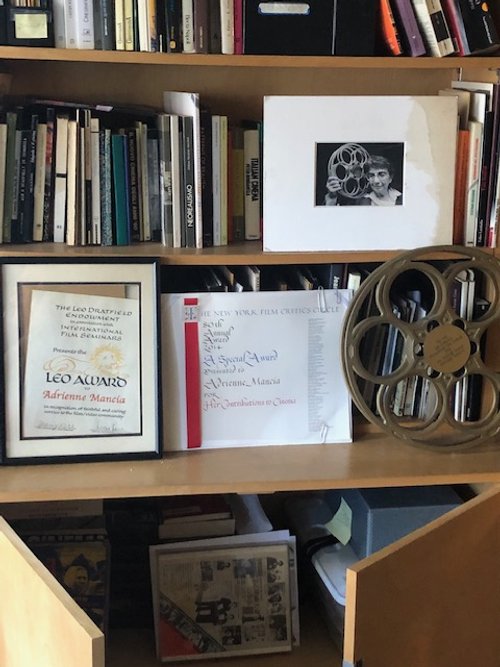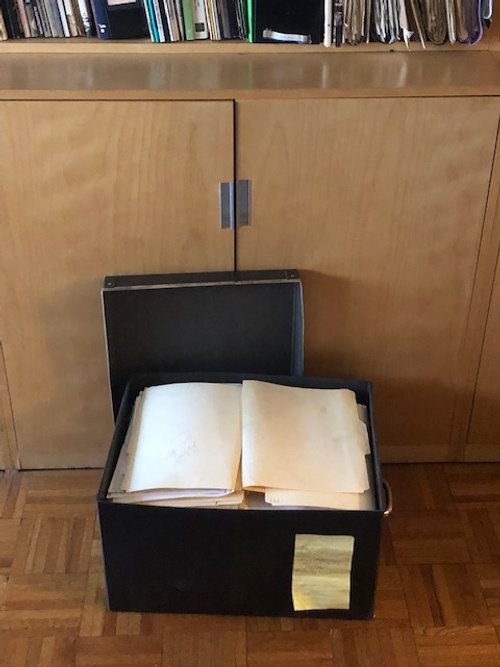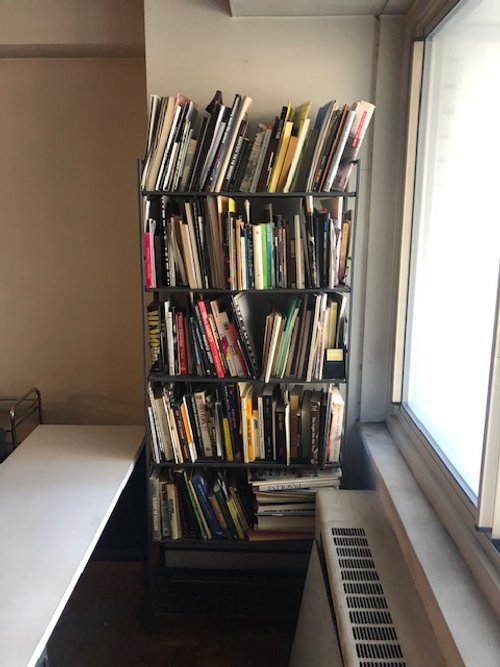MoMA Acquires Adrienne Mancia's Archive
/ADRIENNE MANCIA.
Gartenberg Media Enterprises and The Museum of Modern Art announced MoMA’s acquisition of the archive of Adrienne Mancia (1927-2022) in conjunction with the museum’s recently concluded two month-long tribute In Celebration of Adrienne Mancia. This acquisition by MoMA reflects GME’s longstanding priority to excavate various film, photography, and book and paper collections and place them in museums and archives for long-term safekeeping, preservation, and study.
GME President Jon Gartenberg worked as an archivist in MoMA’s Department of Film for nearly twenty years while Mancia was the head of film programming. During this period, the two developed a long-term professional relationship and personal friendship. In her will, Mancia entrusted her archive to Gartenberg, who then approached his former colleague Ron Magliozzi, Curator in MoMA’s Department of Film regarding this donation. As noted by Magliozzi: “This gift of documentation from the Adrienne Mancia estate is a valued addition to the Museum’s Film Study Center holdings. The wealth of literature and research materials collected during her travels to festivals around the world over a 35-year career is a testament to the knowledge she brought to the selection process and the scholarship that informed her programming activities.”
ADRIENNE MANCIA WITH LONGTIME FRIEND AND COLLEAGUE JON GARTENBERG, GME PRESIDENT.
During her time at MoMA Mancia challenged conventional curatorial practices. She revolutionized the job of the film curator by championing the work of first-time, international, and experimental filmmakers, as well as rediscovering classic films of past eras, all of which she then introduced to audiences in New York. As Magliozzi noted in a recent interview for Screen Slate: “She wanted everyone to be exposed to the things that she was exposed to, that she found interesting and exciting as art…” Film critic and author J. Hoberman echoed this sentiment in Mancia’s obituary in The New York Times: “She was a cinephile, but she was not a snob…”, and Gartenberg noted that “As this was before the age of videotape, internet, and niche movie channels, the recognition for the films that she curated at MoMA garnered an outsized importance in terms of New York film culture and beyond. For me, she was a major bridge between creation and curation.”
Mancia’s proclivity towards diverse and expansive programming is reflected in her archive (pictured below). As part of her work, she built her own extensive research library for various programs she curated; this included research material on everything from animation to experimental filmmaking, and from Indian to Italian cinema. MoMA acquired the complete collection of books, periodicals, film festival catalogues, articles, screening notebooks, program notes, and other paper material and publications that encompass Mancia’s illustrious career — not only at MoMA, but also previously from working with Leo Dratfield at Contemporary Films, and subsequently as the founding curator of the BAM/Cinematek.
According to Gartenberg, one of the most fascinating discoveries in Mancia’s archive are her writings for various publications from the 1960s. These include her extensive coverage of the fourth edition of the Pesaro Film Festival in 1968, via a multi-part series of articles entitled “The Chinese Are Coming: Opening Another Cannes” for The Village Voice, through which Mancia captures on paper the political and social upheaval that was foregrounded during the festival. Her review of John Russell Taylor’s book Cinema Eye, Cinema Ear — Some Key Film Makers of the Sixties was published in Film Comment in 1965. Mancia also penned a script entitled Love’s Tent in October 1969 with filmmaker and fellow curator Donald Richie.
PORTRAIT OF ADRIENNE MANCIA BY MAMBERT (A.k.A. UMBERTO MANCIA).
She also wrote reviews of the film festivals she attended, including pieces on “The Metamorphic Landscape: Annecy” and “The Flaherty Seminar.” Additionally, Mancia hosted a roundtable discussion which featured both Andrew Sarris and Pauline Kael. Although adversaries in their film criticism, Mancia defined their common interest in what she considered “some of the essential qualities of a critic: first, they are enthusiastic about their metier, they care about film and the health of film; then they are adventuresome — they take risks; they have a passionate and very personal point of view and style; they bring an historical perspective to their analysis — and, they go to movies — as many as they can.”
Mancia’s collection of artwork by Jan Lenica, Faith Hubley, Cesare Zavattini, and Marco Bellocchio and other filmmakers was divided among individuals and organizations with whom she felt a strong affinity. Several of these pieces went to MoMA. Now dispersed around the globe, these tangible remembrances of Adrienne Mancia are as widespread geographically as the films that she championed.








